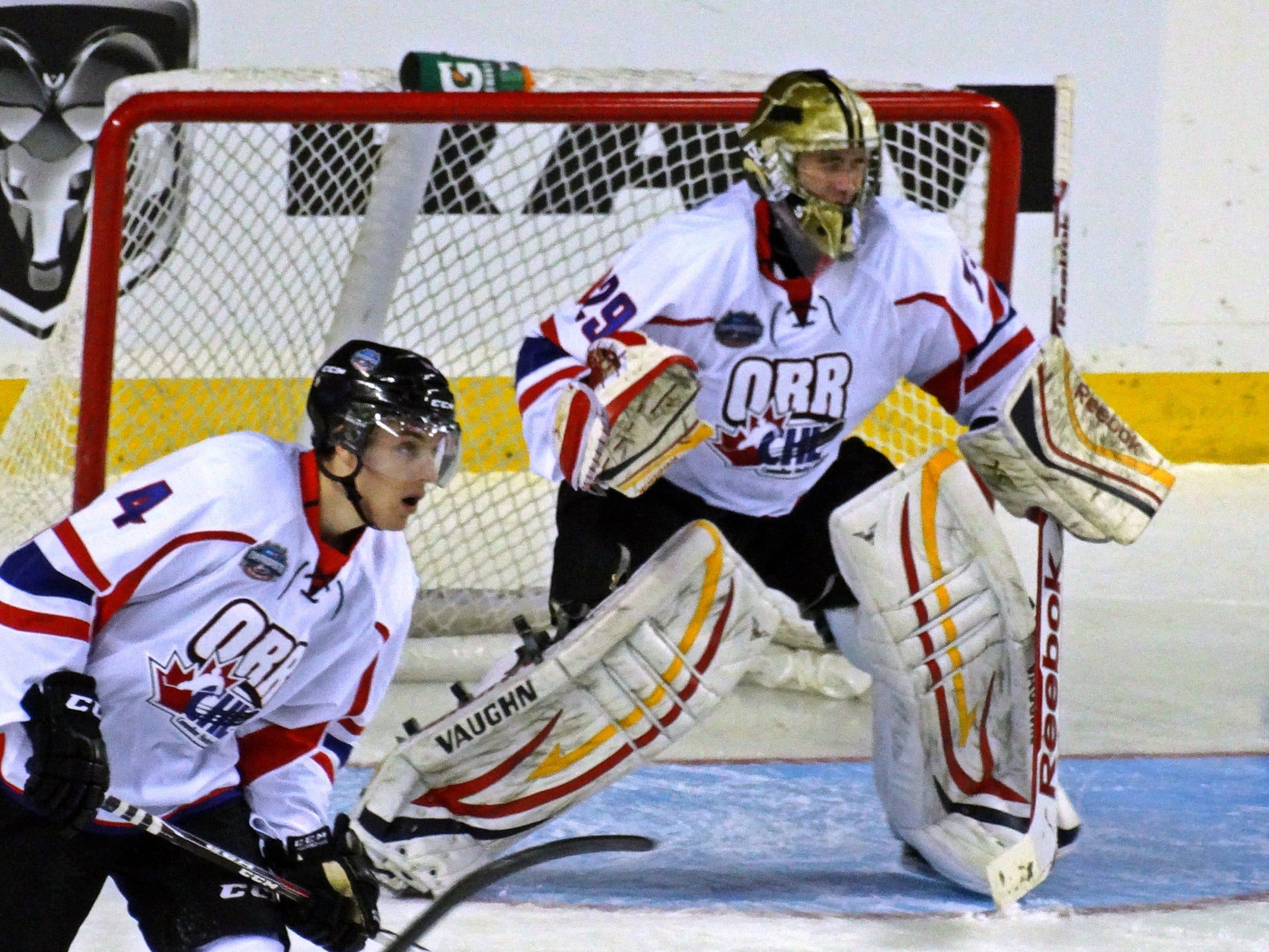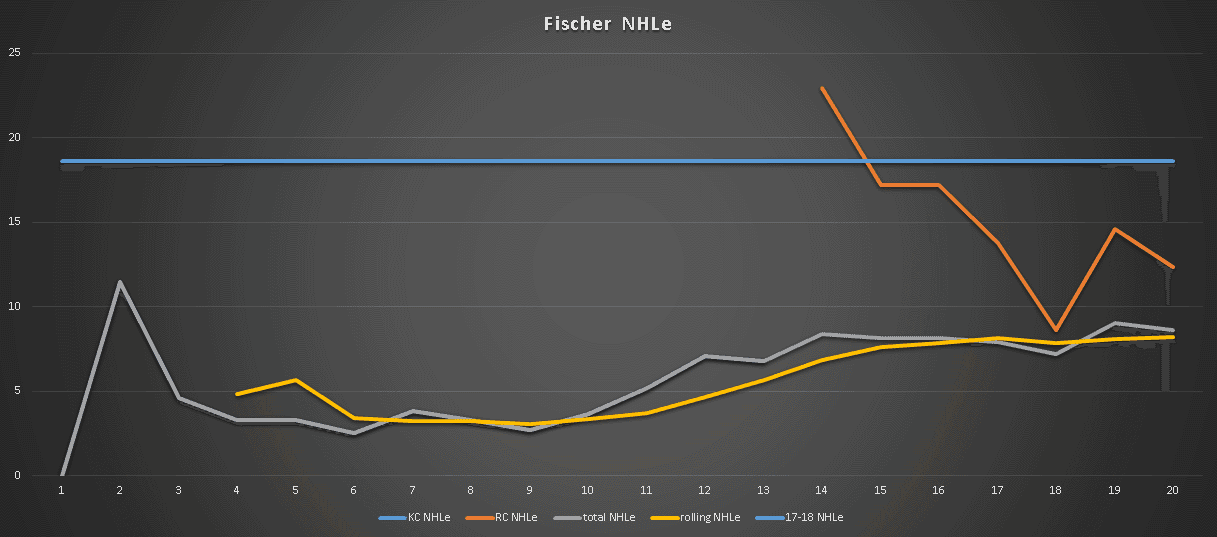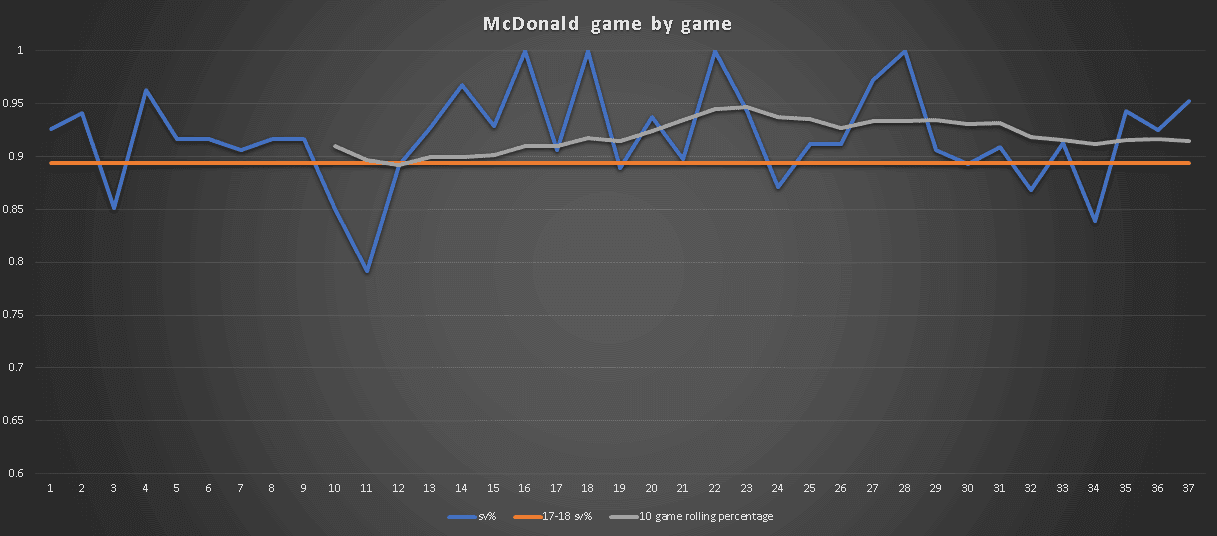FlamesNation prospect wrap-up: the ECHL

Honestly, the ECHL is not the most interesting league to study. It has often functioned as a dumping ground for extra prospects that couldn’t find a spot in the AHL, a place where they can keep themselves occupied while their contracts run out. Perhaps it becomes more than that one day, but for now, that’s what it is.
But there are still prospects there and they’re still worth talking about. Today, we look at three Flames prospects who spent the majority of their season in North America’s third tier league: Zach Fischer, Mason McDonald, and Nick Schneider.
Zach Fischer- RW
When we last checked in
Fischer had a lacklustre end to his WHL career. A trade to Spokane early in the season allowed him to have an expanded offensive role in the top six, but he put up some middling numbers for an overager. He signed an AHL contract with the club at the end of the season, signifying at least some interest in exploring his potential as a pro.
2018-19 story
He began the year in Stockton, but didn’t play for two weeks, as they didn’t really have a spot for him. He was demoted to Kansas City and took a fourth line role with them. He didn’t prove to be too effective, as he saw regular healthy scratches throughout the year.
Then he was traded to Rapid City, which pretty much spelled doom for him. Shipping him to an unaffiliated ECHL team essentially said “hey, we have no use for you, so try to have fun somewhere else.” He saw a bit more ice time and usage, but it didn’t really translate into anything significant.
Numbers and growth
| League | GP | G | A | P | Primary points | 5v5 points | 5v5 primary points | NHLe | |
| 2018-19 | ECHL | 40 | 6 | 9 | 15 | 9 | 12 | 7 | 8.61 |
| 2017-18 | WHL | 46 | 22 | 14 | 36 | 28 | 27 | 20 | 18.61 |

There’s not much to look at here. 15 points in 40 ECHL games is really all you need to know. He had a brief revitalization with Rapid City, but it didn’t last long beyond the first few games. Fischer didn’t even reach the low standards set out by his previous season, and a lot of the good he did in the WHL evaporated in the ECHL
Fischer struggled to produce and didn’t really do anything to stand out on ice. He’s a fighter, as evidenced by his 168 PIMs, but not one that has much value to an NHL team.
What’s next?
Without a doubt, Fischer is not going to be a Flame after this season. He essentially had one season to prove that he was worth of an ELC and fell way below expectations. The team couldn’t find a regular spot for him at any of their professional levels, and it’s unlikely they find one soon.
Mason McDonald- G
When we last checked in
McDonald’s second pro year was another rough one. The Mavericks split the net between him and Tyler Parsons, and Parsons was the better goalie.
And that was the likely write-off point. McDonald had plenty of promise leading up to the draft, but he failed to deliver year after year. Being outplayed by a rookie teenager signified that, at age 22, he had been passed over.
So there was really nothing expected of McDonald heading into this season. If he was bad, it wouldn’t cause anyone to turn their heads. If he was good, it was too little, too late.
2018-19 story
With a secure starting spot in net, McDonald actually turned out to have a really good season. Among goalies who played at least 20 games, McDonald ranked 10th league wide in SV%, up 30 spots from the year before. Without question, he was the #1 goalie in Kansas City, and ran with it all season long.
Numbers and growth
| GP | Min | SV% | SA | GA | |
| 2018-19 | 36 | 2174 | 0.917 | 1113 | 92 |
| 2017-18 | 27 | 1538 | 0.894 | 762 | 81 |

McDonald’s quality was undeniable. He was the only Mavericks goalie to finish with a SV% over .900, 28 points clear of the next best goalie (Ben Halford, 0.889). There were only 10 games where he finished below .900, nearly a direct inverse of last season where he finished with just 12 games above .900. He picked up four shutouts, a career high, and consistently strung together strong performances.
The major question is what this all means. McDonald deserves a lot of praise for this season, but he’s also spent three years in the system, and was a clear bust in two of them. Given his age, this might be a turning point for him, but it could also just be an exception. This season wasn’t really in line with his career history, so there’s a chance he’s just a one hit wonder.
Either way, without AHL appearances this year, it’s hard to measure how good he is to the rest of the Flames’ goaltending crop. Did he actually break through, or did he finally just get used to the shooters he’s seen for three consecutive years?
What’s next?
Five years since being drafted, McDonald has finally shown some sign of life, and then some.
But it might be too late to save him from the Flames releasing him this summer. By adding Artyom Zagidulin into an already congested minors system, it’s McDonald on the way out. The Flames are betting that he is likely to top out at the AHL level and don’t want to devote anymore resources to him.
Perhaps another prospect goalie is moved out and McDonald could stick with the team, but I doubt it. The Flames probably feel they have enough quality that they don’t see him beating out anyone for a position.
Nick Schneider- G
When we last checked in
Schneider returned to the WHL as an overager instead of going pro, landing with the Calgary Hitmen after a few trades opened up the space for the team to carry him (the Flames owning the Hitmen is not a coincidence). The justification was that Schneider needed a lot of work before he could go pro, as his previous junior seasons left a lot to be desired.
Accordingly, Schneider saw a lot of action, suiting up for 61 of a possible 72 games. It wasn’t entirely deserving, as Schneider was one of the worst regular goalies in the WHL, and posted worse stats than his backup. Again, the Flames owning the Hitmen isn’t a coincidence.
2018-19 story
Schneider began his season in the ECHL, playing backup for McDonald, the role he would hold for the entire season. With McDonald’s starter status unquestionably set due to his strong performances, Schneider was stuck on door duty.
Interestingly enough, Schneider was the one to receive a call up to the Stockton Heat when they were hit with injury trouble in November. The rationale was that he was the backup in the ECHL, so if he was also the backup in the AHL, it wouldn’t really matter because he wasn’t playing anyways.
Then something interesting happened: Schneider took the Heat net and put up some great performances. After playing two relief games, he was handed the net and immediately went on a tear, hitting at least 0.940SV% in four of his first five games, including a shutout. He oscillated between good and bad in final four games, finishing with two games above 0.930 SV%, and two games below .800 SV%.
He didn’t see the AHL again after that. With organizational preference going to Tyler Parsons and Jon Gillies, Schneider was sent back to the ECHL, where he resumed backup duties.
Numbers and growth
| League | GP | Min | SV% | SA | GA | |
| 2018-19 | ECHL | 21 | 1263 | 0.884 | 662 | 77 |
| 2018-19 | AHL | 11 | 465 | 0.922 | 243 | 19 |
| 2017-18 | WHL | 61 | 3491 | 0.885 | 1866 | 215 |

Schneider’s larger body of work in the ECHL was reminiscent of his time in the WHL: not great. He routinely finished below .900, with a lot of starts dipping below the .850 point. Compared to how McDonald performed, it’s pretty damning.
His AHL performances do offer some hope. The 11 games he played for the Heat were the best goaltending the baby Flames saw all season, as he finished with the highest SV% of any Heat goaltender, and was also the only player to have a SV% over .900.
But we should view that as an outlier instead of a breakthrough. Schneider has been consistently poor throughout his career, and I don’t think the 11 games he played for the Heat were indicative of anything other than him getting hot for a short period of time.
What’s next?
Schneider is still under contract for a season, so the Flames do have time to figure out what he is.
The deck is unfortunately stacked against him. Barring any sort of preseason shock, he projects to be behind Gillies, Parsons, and Zagidulin and will likely spend his entire season in the ECHL. Depending on how the goalie depth breaks down, it could mean another season as the backup. As we’ve seen in this article, that’s not entirely the best place to determine how good he is. He never got a chance to double down and prove himself in a larger AHL sample, and likely never will.
But for my money, it doesn’t really matter. Schneider has been below average or worse at every stop. It’s unlikely to change with an opportunity in a tougher league.
Previously
Recent articles from christian tiberi




